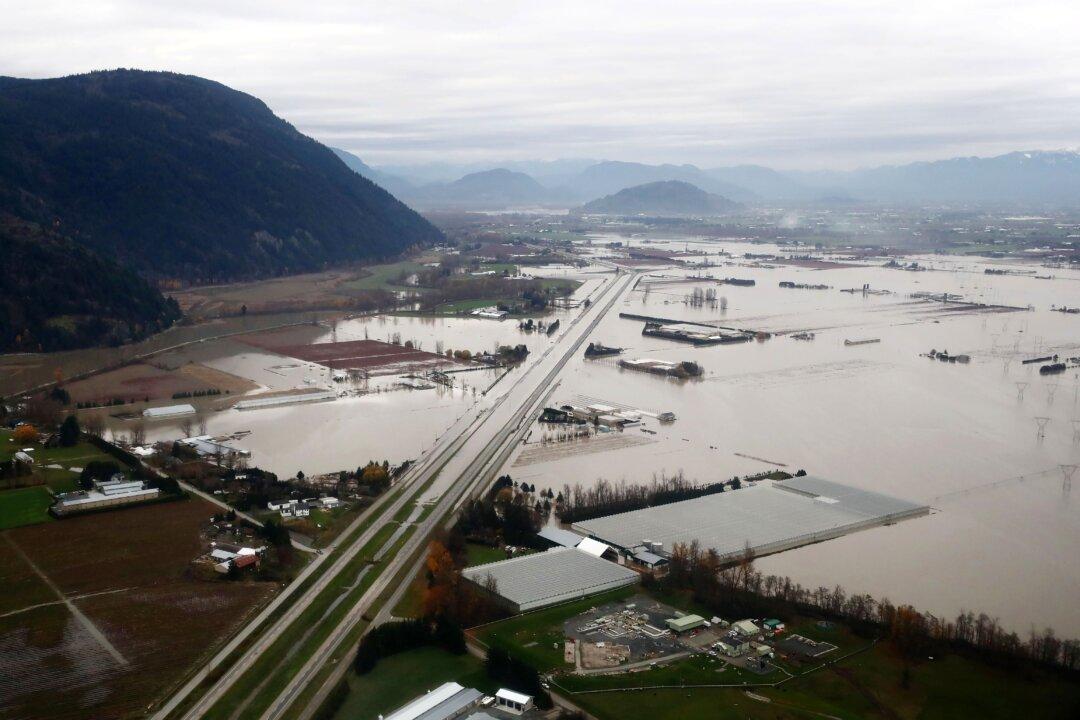Two residents of Sumas Prairie in the Abbotsford, B.C., area near the Canada-U.S. border have launched a class action lawsuit against three levels of government seeking damages for losses caused by flooding last November.
In mid-November 2021, southern B.C. was hit by heavy rains that led to two breaches of the Sumas dike, causing the embankment to overflow and later break apart. The resulting flood covered the Sumas Prairie, forced 15,000 people from their homes, and created extensive damage to properties, lands, and livestock.





